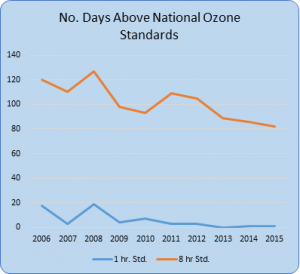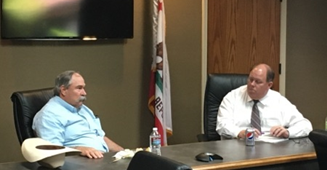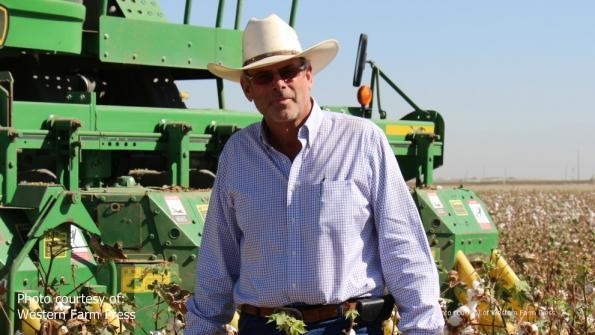Despite the fact the rules are final and the odds are against it, the California Cotton Ginners and Growers Associations are still battling on the issue of applicability and how it applies to cotton gins under the Preventive Controls Rules for Animal Food. As the rules stand now most cotton gins will be exempt from the Animal Food rule; however, some will be subject to the confusing rules. Confusing, because the rules state that cotton gins are specifically exempt from the Good Manufacturing Practices (GMPs) required by the rule, but must comply with the risk assessment and supplier control provisions of the rule. Applicability is based on ownership and in recent correspondence from FDA to CCGGA, FDA stated “We have acknowledged that the safety of animal food (e.g., cotton seed) from ginning on farm and off farm would not be different based on where the activities take place. We have also acknowledged that cotton ginning facilities are likely to determine through their hazard analysis that there are no hazards requiring a preventive control and that therefore they are not required to establish preventive controls and associated management components”. With these statements in mind, CCGGA has engaged Congress to assist in the effort to put all cotton gins under the same provisions, meaning exemption from the Animal Food Rule. CCGGA is working closely with the National Cotton Ginners Association and National Cotton Council on this issue. An important announcement related to this could be made soon, so stay tuned!
Author Archives: ccgga
CARB Releases Final Sustainable Freight Plan
In response to an Executive Order issued last year by Governor Brown, state agency leaders released the California Sustainable Freight Action Plan, a comprehensive document that serves as a blueprint for transforming the state’s multi-billion dollar freight transport system. This new plan affects every facet of transportation in the state from rail, trucks and forklifts to fuel, transportation refrigeration units (TRUs) and ships. From the Association’s perspective the plan has improved in that it now recognizes and relies heavily upon incentives to help fund many of the new technologies that companies will be implementing. “We listened to stakeholders, incorporated changes, and we will continue to consult with them as we put the Plan into action” said California Air Resources Board Chair Mary D. Nichols. While it has improved, major impacts still remain or are yet to be fleshed out. Developed in response to Governor Brown’s Executive Order B-32-15, which calls for a single integrated action plan for California, the Action Plan was prepared by the California State Transportation Agency, California Environmental Protection Agency, California Natural Resources Agency, California Air Resources Board, California Department of Transportation, California Energy Commission and the Governor’s Office of Business and Economic Development, with broad stakeholder input. The Executive Order directs the state agencies to pursue a shared vision to “improve freight efficiency, transition to zero-emission technologies and increase the competitiveness of California’s freight system.” The Action Plan includes a long term-2050 vision and guiding principles for California’s future freight transport system along with these targets for 2030:
- Improve freight system efficiency 25 percent by 2030
- Deploy over 100,000 zero-emission vehicles/equipment and maximize near-zero by 2020
- Foster future economic growth within the freight and goods movement industry.
The plan also identifies opportunities to leverage State freight transport system investments, pinpoints actions to initiate over the next five years to meet goals, and lists possible pilot projects to achieve concrete progress in the near term. Some of the areas where our members will be impacted include:
- Zero emission technologies, such as electric forklifts
- Lower emission trucks (beyond the current ARB Truck Rule)
- Transportation Refrigeration Units (TRUs)
- Freight Hubs (could include our operations where trucks come and go)
Over the next several months, the Association will be heavily involved in this issue as we work to push for incentives and voluntary approaches to this broad regulatory effort. Next steps for state agencies will include continued work with federal, state, industry, labor, regional, local and environmental and community-based partners to refine and prioritize the strategies and actions outlined in the Action Plan. The state agencies will also create collaborative stakeholder working groups on competitiveness, system efficiency, workforce developments, and regulatory and permitting process improvements. Regular California Freight Advisory Committee meetings will continue, and by July 2017, the state agencies will establish work plans for chosen pilot projects.
Association Pushes Back on 1 Mile Buffer Zone
The California Cotton Ginners and Growers Associations (CCGGA) participated in a meeting of agricultural organizations the California Department of Pesticide Regulation (CDPR) opposing the idea of a one mile buffer zone one pesticide and fumigation applications being pushed by pesticide activist groups including the United Farm Workers (UFW) and the Pesticide Action Network of North America (PANNA). The concept of a one mile buffer zone on all pesticide and fumigation applications has been raised in recent months by the activists in the CDPR Initiative to address “Pesticides Use Near Schools”. The UFW and PANNA have submitted several form letters and postcards. To combat that effort, CCGGA along with the Western Agricultural Processors Association, the Nisei Farmers League, California Fresh Fruit Association, California Citrus Mutual, California Agricultural Aircraft Association, and the Western Plant Health Association met with CDPR Director Brian Leahy to express our frustration with the effort and call for CDPR to continue to use sound science when making regulatory decisions on buffer zones. CCGGA President/CEO Roger Isom presented Director Leahy with over 500 agricultural industry letters from actual California farmers, processors and allied industry calling for CDPR to make policy decisions based on science. If you haven’t sent in a letter, we strongly encourage you to do so. The time is now for your voice to be heard!
Some Good News – EPA Finds that San Joaquin Valley Meets 1 Hr. Ozone Standard!
The Environmental Protection Agency (EPA) has determined that the San Joaquin Valley nonattainment area “has attained the 1-hour ozone National Ambient Air Quality Standard”. This determination is based on sufficient, quality-assured, and certified data for the 2012-2014 period. Ozone data collected in 2015 shows continued attainment of the standard in the San Joaquin Valley. EPA noted that preliminary data for 2015 was consistent with continued attainment in the San Joaquin Valley. The Valley covers approximately 23,000 square miles and includes all of Fresno, Kings, Madera, Merced, San Joaquin, Stanislaus, and Tulare counties, as well as the western half of Kern County. EPA agrees with reports and associated analyses, submitted by the California Air Resources Board (CARB) and the San Joaquin Valley Air Pollution Control District (“District”), and finds the Valley has attained the 1-hour ozone standard. While this is great news, unfortunately it does not in any way change the air quality regulations related to ozone. That is because EPA has adopted an 8 hour ozone standard that is much lower and much more difficult to achieve. Nonetheless, as trucks, tractors and off-road equipment are being replaced ozone measurements have dropped considerably in the last ten years as air quality has drastically improved!
MOU Signed…Now Real Work Begins on Temperance Flat
The dirt isn’t moving just yet, but the real work on the Temperance Flat Dam and Reservoir is now underway. With the recent signing of the Memorandum of Understanding between the San Joaquin Valley Water Infrastructure Authority and the Bureau of Reclamation, the Technical Advisory Committee (TAC) is now meeting on a regular basis to prepare the necessary application for the Proposition 1 Water Bond Funding. Critical work has to go into this effort including determining all of the different components in the application package (i.e. dam project, groundwater recharge, ecosystem restoration, etc.). The Association has a seat at the table with the Association’s President/CEO Roger Isom appointed to the TAC. The TAC, which meets monthly, is chaired by Chris White, General Manager of the Central California Irrigation District, and the Vice Chair is Julia Berry, Director of Water and Natural Resources for Madera County. The TAC is charged with assisting the Authority in meeting its mandate to solicit grants from the Water Bond or similar state and federal programs or funds. The TAC will also provide ongoing guidance and expertise on the disbursement and expenditure of these funds.
Temperance Flat Project Makes Significant Step Forward
A partnership between San Joaquin Valley and federal agencies aimed at moving toward development of additional San Joaquin River water storage became reality this morning during a signing ceremony overlooking Millerton Lake and Friant Dam northeast of Fresno. Representatives of the San Joaquin Valley Water Infrastructure Authority and the Bureau of Reclamation signed a Memorandum of Understanding (MOU) to coordinate and complete feasibility studies of the proposed Temperance Flat Dam and Reservoir project. Tulare County Supervisor Steve Worthley, Authority President, and Reclamation Deputy Director of the Mid-Pacific Region Federico Barajas signed the MOU. The partnership will allow communities and organizations throughout the San Joaquin Valley to participate in completing the studies of a new dam and reservoir on the San Joaquin River upstream of Friant Dam. The project would permit capture and storage of high flows in above-average water years and high flow events. Existing Millerton Lake’s comparatively small capacity of 520,500 acre-feet is frequently exceeded by inflows from the river’s Sierra Nevada watershed. “I’m pleased to sign this Memorandum of Understanding between the Bureau of Reclamation and the San Joaquin Valley Water Infrastructure Authority,” said Deputy Director Barajas. The proposed project’s site, several miles upstream from Friant Dam, was the originally proposed location for a Millerton area reservoir in 1930. The present Friant Dam location was selected to reduce construction costs. The proposed site is within the upper reaches of Millerton Lake. If authorized by Congress and jointly funded, the facilities would be part of the Federal Central Valley Project. As conceived, the new reservoir would create approximately 1,200,000 acre-feet of additional water storage to supplement Millerton Lake’s current capacity. “This project would permit us to store more of the high flows now being lost to flood releases when Millerton storage runs out of room,” Worthley said. “Being able to capture and hold high flows until there is conveyance and percolation capacity available for moving the water to distant aquifer recharge and banking facilities is critical for improving the valley’s groundwater management.” Speaking at the press conference, the Association’s President/CEO Roger Isom stated “This has been a long time coming. I brought my shovel and concrete boots, let’s get to work! The Assembly members here today and agriculture worked hard to get the Water Bond passed, so let’s make this happen!”
Association Co-Hosts Assemblyman Frank Bigelow
The California Cotton Ginners and Growers Associations (CCGGA) co-hosted Assemblyman Frank Bigelow (5th Assembly District) at the Association Offices in Fresno this past week. Issues discussed include increased regulatory burden and the regulatory environment in general, the critical biomass disaster, pesticide issues and the California political landscape. Assemblyman Bigelow has been a longtime friend to agriculture and it was a great opportunity to visit with the Assemblyman and farmer! Representing the Association at this event were President/CEO Roger Isom, Director of Technical Services Christopher McGlothlin and Director of Regulatory Affairs Jodi Raley. Co-hosting the event were the Western Agricultural Processors Association, California Citrus Mutual, California Fresh Fruit Association, the Nisei Farmers League, Western Plant Health Association, California Dairies Incorporated and Allied Grape Growers.
Industry Leader, Advocate & Friend Mark Watte Passes Away
Longtime industry advocate Mark Watte passed away this past weekend after a valiant battle with cancer. Watte was a tireless, passionate and unselfish voice for all of agriculture.
Association President/CEO Roger Isom stated “the California agricultural industry is grieving this week. We have lost one of our true champions. Mark’s rise to the Chairmanship of Cotton Incorporated was symbolic of his enduring drive to promote cotton and all of agriculture as the best in the world. His courageous bout with cancer was emblematic of his toughness and can do attitude no matter the circumstances. Mark Watte inspired all of us to get up, get involved and speak our minds. While we mourn his passing, I can assure you that Mark is chastising us right now to pick up the flag and get back to it. Get back to promoting, supporting and fighting for the greatest agricultural land in the world”.
Past Association President/CEO Earl P. Williams, who knew Watte well, said “The industry has lost an outstanding leader and all that knew him have lost a real and true friend. The industry is better off having had his inspirational and “cut to the chase” leadership. A wonderful person and proud to say I had the honor of his friendship.”
Watte was a partner in George Watte & Sons, a 3,000-acre diversified farming operation in Tulare, California, including cotton, alfalfa, corn silage, black-eyed peas, pistachios and a 1,000 jersey cow dairy. Watte graduated from Cal Poly San Luis Obispo with a degree in Agricultural Business in 1974. He then distinguished himself as one of the true leaders within the California agricultural community and the U.S. cotton industry. Watte demonstrated his leadership through participation in several organizations, including the Consolidated Peoples Ditch Co; the Friant Water Authority; the Tulare Board of Public Utilities; and the Kaweah Delta Water Conservation District, on which he served as Vice Chair, and Past Chairman of the World Ag Expo. He was also an advisor to the California Cotton Growers Association and most recently became Chairman of the Cotton Incorporated, a national organization conducting research and tasked with the worldwide promotion of US cotton. Over the course of his career Watte has received numerous recognitions, including: the 2000 Tulare Farmer of the Year (an award shared with his brother and business partner, Brian Watte); 2013 Tulare Man of the Year; Tulare County Agriculturist of the Year; and is a recipient of the 2015 High Cotton Award, presented by Delta Farm Press.
Funeral Services will be at 10:30 am this Thursday, June 23rd at the St. Aloysius Catholic Church in Tulare followed by the burial at North Tulare Cemetery, then a reception afterwards at the International Agri-center, Heritage Complex. Donations, in lieu of flowers, can be made to the Watte/Griesbach Memorial Fund, 627 Beatrice Dr., Tulare; or the Tulare Hospital Foundation in Tulare.
CCGGA Blasts NMFS Proposal
The California Cotton Ginners and Growers Associations (CCGGA) submitted a letter to Department of Interior Secretary Sally Jewell this week urging the Department to reconsider the proposal by the National Marine Fisheries Service (NMFS) to limit Shasta releases to 8,000 cfs for temperature protection for salmonids. Doing so would cost the Central Valley Project (CVP) over 400,000 ac-ft of water, most of which had already been factored into this year’s water plans. The elimination of this water will have far reaching impacts to all water users. To add to the mess, the Fish and Wildlife Service (FWS) is requesting 300,000 ac-ft to be released later this summer for Delta smelt protection, meaning even more water could be lost from an already devastated valley.
CCGGA Opposes Wild and Scenic Designation for San Joaquin River
The California Cotton Ginners and Growers Associations (CCGGA) has weighed in on the Bureau of Land Management’s (BLM) proposed designation of a 7.5 mile stretch of the San Joaquin River above Millerton Lake as “wild and scenic”. Such a designation would eliminate any possibility of the construction of Temperance Flat Dam and Reservoir. CCGGA wrote a letter this week to Department of Interior Secretary Sally Jewell opposing the proposed listing as not meeting the criteria for “wild and scenic”, which requires the river to be “free flowing”. The proposed area falls between Kerckhoff Dam and Kerchoff Powerhouse which has the water running through tunnels thereby largely bypassing the area. As such, it could not possibly meet the very basic criteria of “free flowing” and CCGGA urged the Secretary to not list the San Joaquin River as “wild and scenic.”



